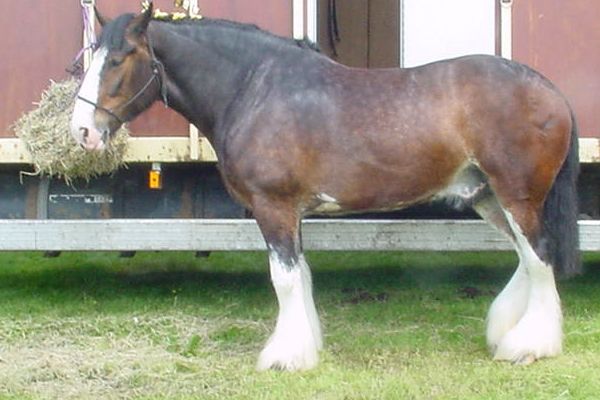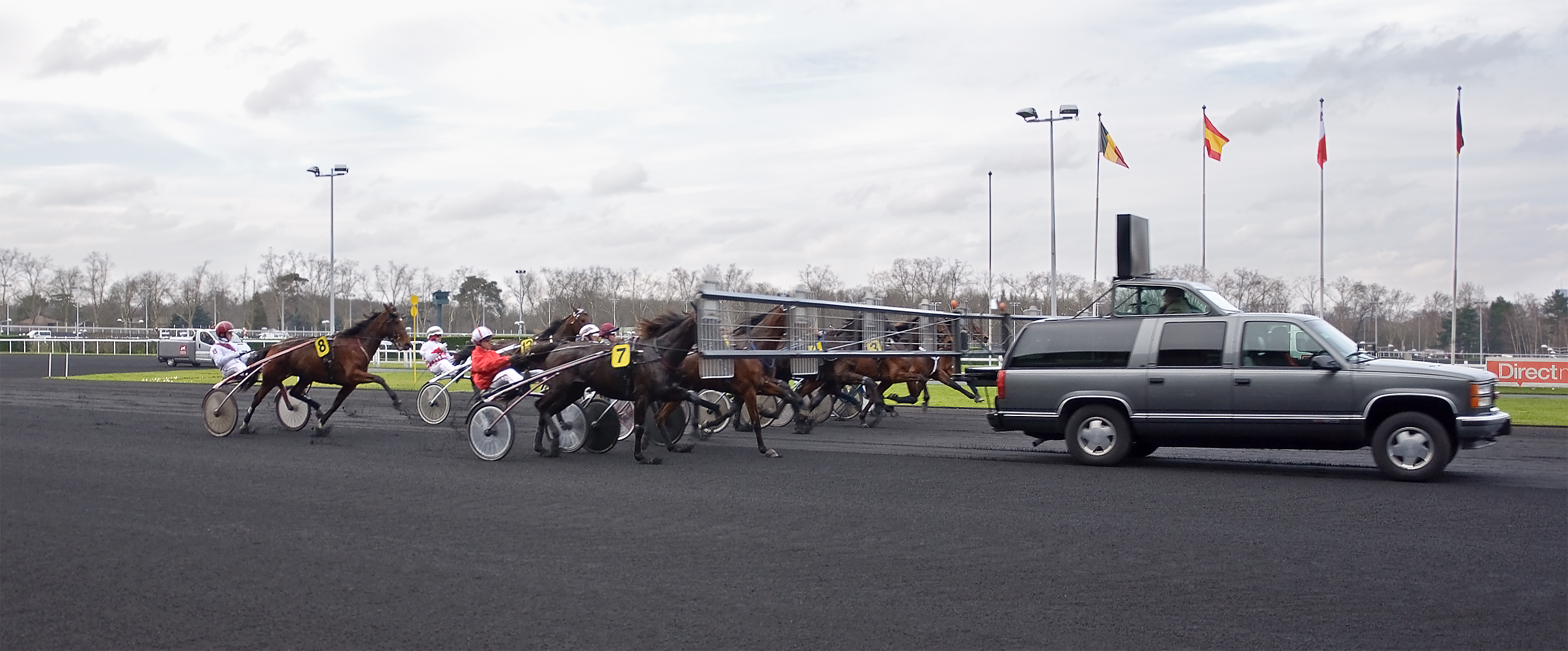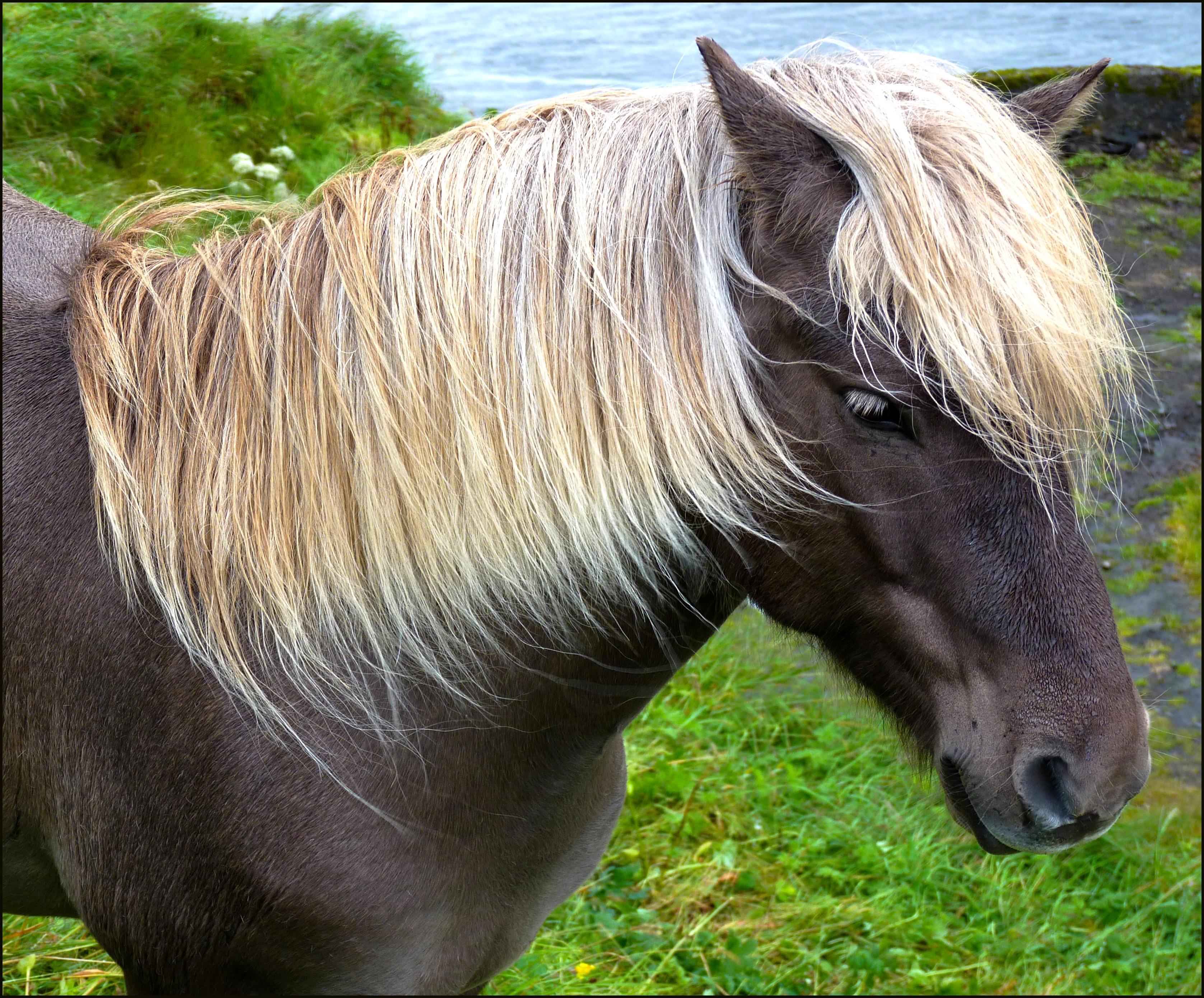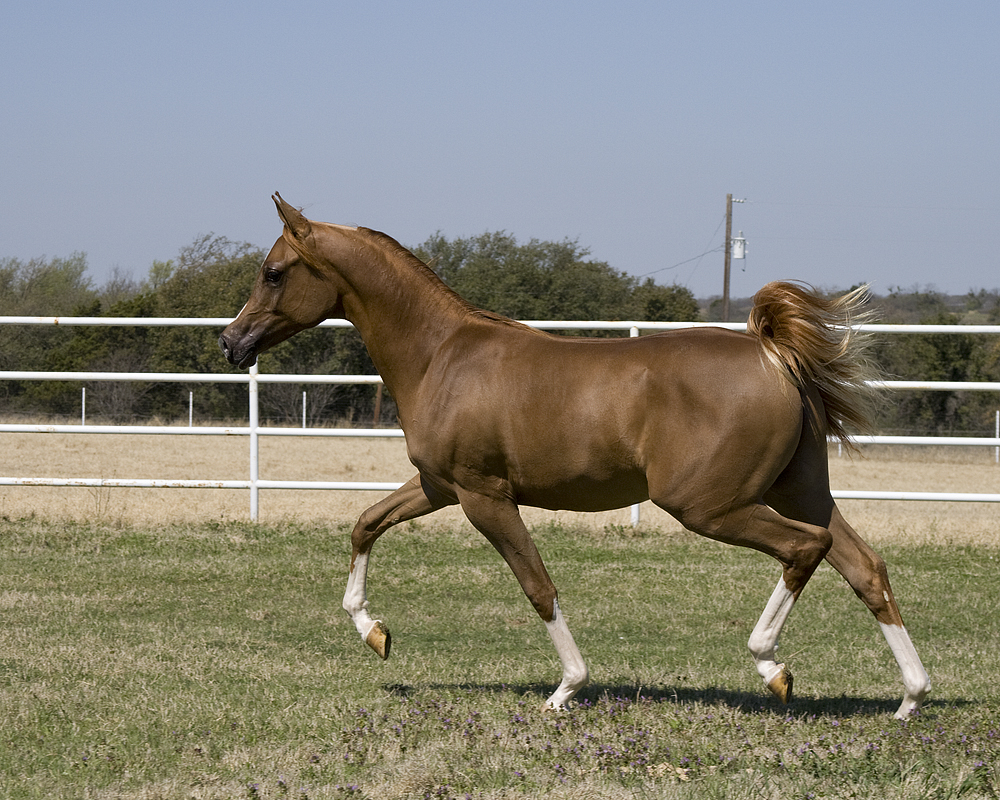|
Finnhorse
The Finnhorse or Finnish Horse ( , literally "horse of Finland"; , literally "finnish cold-blood") is a horse breed with both riding horse and draught horse influences and characteristics, and is the only breed developed fully in Finland. In English it is sometimes called the Finnish Universal, as the Finns consider the breed capable of fulfilling all of Finland's horse needs, including agricultural and forestry work, harness racing, and riding. In 2007, the breed was declared the official national horse breed of Finland. The Finnhorse is claimed to be among the fastest and most versatile "coldblood" breeds in the world. In Finland, the term "universal horse" is used to describe the Finnhorse and breeds such as the Fjord horse that are relatively small with a body type that is heavy for a riding horse but light for a draught. There are four separate sections within the Finnhorse stud book, each with different goals: to develop a heavier working horse, a lighter trotter ty ... [...More Info...] [...Related Items...] OR: [Wikipedia] [Google] [Baidu] |
Breed Registry
A breed registry, also known as a herdbook, studbook or register, in animal husbandry, the hobby of animal fancy, is an official list of animals within a specific breed whose parents are known. Animals are usually registered by their breeders while they are young. The terms studbook and register are also used to refer to lists of male animals "standing at stud", that is, those animals actively breeding, as opposed to every known specimen of that breed. Such registries usually issue certificates for each recorded animal, called a pedigree, pedigreed animal documentation, or most commonly, an animal's "papers". Registration papers may consist of a simple certificate or a listing of ancestors in the animal's background, sometimes with a chart showing the lineage. Types of registries There are breed registries and breed clubs for several species of animal, such as dogs, horses, cows and cats. The ''European Association of Zoos and Aquaria'' (EAZA) and the US '' Association of Zo ... [...More Info...] [...Related Items...] OR: [Wikipedia] [Google] [Baidu] |
Draft Horse
A draft horse (US) or draught horse (UK), also known as dray horse, carthorse, work horse or heavy horse, is a large horse bred to be a working animal hauling freight and doing heavy agricultural tasks such as plowing. There are a number of breeds, with varying characteristics, but all share common traits of strength, patience, and a docile temperament. While indispensable to generations of pre-industrial farmers, draft horses are used today for a multitude of purposes, including farming, draft horse showing, logging, recreation, and other uses. Draft breeds have been crossbred with light riding breeds such as the Thoroughbred to create sport horses or warmbloods. While most draft horses are used for driving, they can be ridden and some of the lighter draft breeds are capable performers under saddle. Characteristics Draft horses are recognizable by their extremely muscular build. They tend to have broad, short backs with powerful hindquarters. In general, they are t ... [...More Info...] [...Related Items...] OR: [Wikipedia] [Google] [Baidu] |
Harness Racing
Harness racing is a form of horse racing in which the horses race at a specific gait (a trot or a pace). They usually pull a two-wheeled cart called a sulky, spider, or chariot occupied by a driver. In Europe, and less frequently in Australia and New Zealand, races with jockeys riding directly on saddled trotters ( in French) are also conducted. Breeds In North America, harness races are restricted to Standardbred horses, although European racehorses may also be French Trotters or Russian Trotters, or have mixed ancestry with lineages from multiple breeds. Orlov Trotters race separately in Russia. The light cold-blooded Coldblood trotters and Finnhorses race separately in Finland, Norway and Sweden. Standardbreds are so named because in the early years of the Standardbred stud book, only horses who could trot or pace a mile in a ''standard'' time (or whose progeny could do so) of no more than 2 minutes, 30 seconds were admitted to the book. The horses have proportiona ... [...More Info...] [...Related Items...] OR: [Wikipedia] [Google] [Baidu] |
Mane (horse)
On horses, the mane is the hair that grows from the top of the neck of a horse or other equine, reaching from the poll (horse), poll to the withers, and includes the forelock or foretop. It is thicker and coarser than the rest of the horse's coat, and naturally grows to roughly cover the neck. Heredity plays a role, giving some horses a longer, thicker mane, and others a shorter, thinner one. Some horses, such as those used in circuses or in mounted displays such as Cavalia, have manes allowed to grow down to their knees. Others have their manes deliberately shaved completely off for style or practical purposes. When ungroomed, however, the mane usually grows no longer than the width of the horse's neck, as natural wear and tear limit its potential length. The mane is thought to keep the neck warm, and possibly to help water run off the neck if the animal cannot obtain shelter from the rain. It also provides some fly protection to the front of the horse, although the tail is us ... [...More Info...] [...Related Items...] OR: [Wikipedia] [Google] [Baidu] |
Flaxen Gene
Flaxen is a genetic trait in which the mane (horse), mane and tail (horse), tail of chestnut (coat), chestnut-colored horses are noticeably lighter than the body coat color, often a golden blonde shade. Manes and tails can also be a mixture of darker and lighter hairs. Certain horse breeds such as the Haflinger carry flaxen chestnut coloration as a breed trait. It is seen in chestnut-colored animals of other horse breeds that may not be exclusively chestnut. The degree of expression of the trait is highly variable, with some chestnuts being only slightly flaxen while others are more so. Flaxen was once thought to be produced by a recessive allele, based on preliminary studies, proposed as ''Ff'' for ''flaxen''. However, more recently it is thought that it may actually be polygenic, influenced by multiple genes. Some chestnut horses that do not exhibit much flaxen may nonetheless produce strongly flaxen offspring. Studies on Morgan horses have indicated that the flaxen trait i ... [...More Info...] [...Related Items...] OR: [Wikipedia] [Google] [Baidu] |
Finland
Finland, officially the Republic of Finland, is a Nordic country in Northern Europe. It borders Sweden to the northwest, Norway to the north, and Russia to the east, with the Gulf of Bothnia to the west and the Gulf of Finland to the south, opposite Estonia. Finland has a population of 5.6 million. Its capital and largest city is Helsinki. The majority of the population are Finns, ethnic Finns. The official languages are Finnish language, Finnish and Swedish language, Swedish; 84.1 percent of the population speak the first as their mother tongue and 5.1 percent the latter. Finland's climate varies from humid continental climate, humid continental in the south to boreal climate, boreal in the north. The land cover is predominantly boreal forest biome, with List of lakes of Finland, more than 180,000 recorded lakes. Finland was first settled around 9000 BC after the Last Glacial Period, last Ice Age. During the Stone Age, various cultures emerged, distinguished by differen ... [...More Info...] [...Related Items...] OR: [Wikipedia] [Google] [Baidu] |
Breed Sections
A breed is a specific group of breedable domestic animals having homogeneous appearance (phenotype), homogeneous behavior, and/or other characteristics that distinguish it from other organisms of the same species. In literature, there exist several slightly deviating definitions. Breeds are formed through genetic isolation and either natural adaptation to the environment or selective breeding, or a combination of the two. Despite the centrality of the idea of "breeds" to animal husbandry and agriculture, no single, scientifically accepted definition of the term exists. A breed is therefore not an objective or biologically verifiable classification but is instead a term of art amongst groups of breeders who share a consensus around what qualities make some members of a given species members of a nameable subset. Another point of view is that a breed is consistent enough in type to be logically grouped together and when mated within the group produce the same type. When bred togeth ... [...More Info...] [...Related Items...] OR: [Wikipedia] [Google] [Baidu] |
Studbook Selection
Studbook selection is a process used in certain breeds of horses to select breeding stock. It allows a breed registry to direct the evolution of the breed towards the ideal by eliminating unhealthy or undesirable animals from the population. The removal of individuals from a population is called culling, and does not suggest killing the animal in question. Typically, culls are castrated or they and their offspring are unable to be registered. Registries which implement studbook selection differ from registries which require only two parents of the proper pedigree or registration status. For example, a horse foal with two Thoroughbred parents is almost certainly a Thoroughbred, but a foal with two Oldenburg parents may not be accepted through studbook selection to be an Oldenburg. The pattern of studbook selection varies from nation to nation and registry to registry, but among horse registries, particularly warmblood registries, the general outline includes an inspection of foa ... [...More Info...] [...Related Items...] OR: [Wikipedia] [Google] [Baidu] |
Horse Gait
Horses can use various gaits (patterns of leg movement) during Terrestrial locomotion, locomotion across solid ground, either naturally or as a result of specialized horse training, training by humans.Ensminger, M. E. ''Horses and Horsemanship'' 6th edition USA: Interstate Publishers 1990 pp. 65–66 Classification Gait, Gaits are typically categorized into two groups: the "natural" gaits that most horses will use without special training, and the "Ambling gait, ambling" gaits that are various smooth-riding, four-beat footfall patterns that may appear naturally in some individuals. Special training is often required before a horse will perform an ambling gait in response to a equestrianism, rider's command. Another system of classification that applies to Quadrupedalism, quadrupeds uses three categories: walking and ambling gaits, running or trotting gaits, and leaping gaits.Tristan David Martin Roberts (1995) ''Understanding Balance: The Mechanics of Posture and Locomotion'', ... [...More Info...] [...Related Items...] OR: [Wikipedia] [Google] [Baidu] |
Trot (horse Gait)
The trot is a two-beat diagonal horse gait where the diagonal pairs of legs move forward at the same time with a moment of suspension between each beat. It has a wide variation in possible speeds, but averages about . A very slow trot is sometimes referred to as a jog. An extremely fast trot has no special name, but in harness racing, the trot of a Standardbred is faster than the gallop of the average non-horse racing, racehorse, and has been clocked at over . On June 29, 2014, at Pocono Downs in Pennsylvania the Swedish standardbred Sebastian K trotted a mile in 1 minute, 49 seconds (quarters were passed at 26:2, 55:3 and 1,21:4). This is equivalent to a 1000-pace in 1.07,7 or 53.14 kilometers per hour or 33 miles per hour. From the standpoint of the balance of the horse, the trot is a very stable gait and does not require the horse to make major balancing motions with its head and neck.Harris, Susan E. ''Horse Gaits, Balance and Movement'' New York: Howell Book House 1993 ... [...More Info...] [...Related Items...] OR: [Wikipedia] [Google] [Baidu] |
Black (horse)
Black is a hair coat color of horses in which the entire hair coat is black. It is not uncommon to mistake dark chestnuts or bays for black. Black horses have dark brown eyes, black skin, and wholly black hair coats without any areas of permanently reddish or brownish hair. They may have pink skin beneath any white markings under the areas of white hair, and if such white markings include one or both eyes, the eyes may be blue. Many black horses "sun bleach" with exposure to the elements and sweat, and therefore their coats may lose some of their rich black character and may even resemble bay or seal brown, though examination of the color of hair around the eyes, muzzle and genitals will determine color. Some breeds of horses, such as the Friesian horse, Murgese and Ariegeois (or Merens), are almost exclusively black. Black is also common in the Fell pony, Dales pony, Ostfriesen and Alt-Oldenburger, Kladruber, and Groningen. Visual identification When identifying ... [...More Info...] [...Related Items...] OR: [Wikipedia] [Google] [Baidu] |






